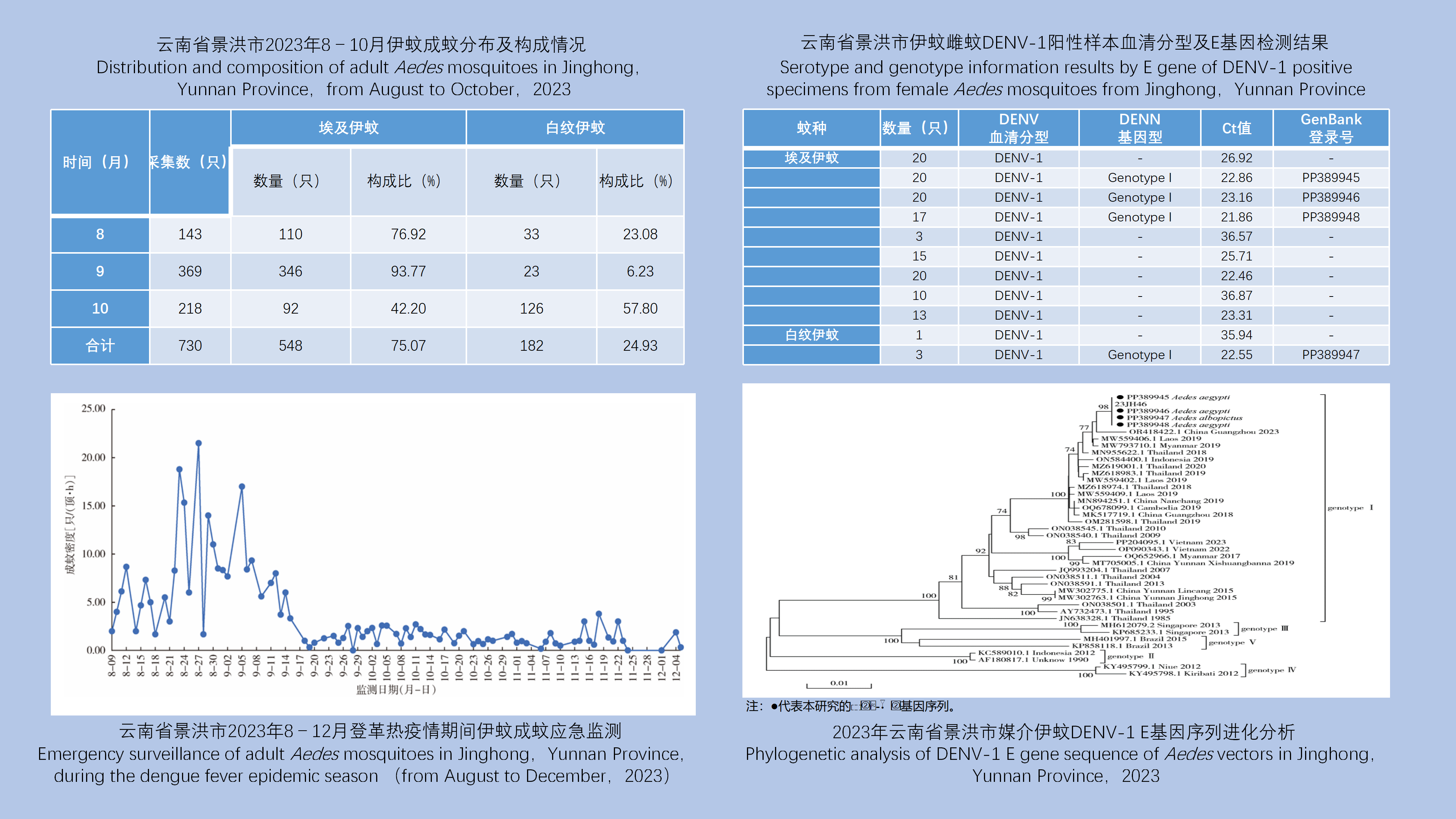 PDF(837 KB)
PDF(837 KB)


2023年云南省景洪市登革热流行季节媒介伊蚊种群构成及虫媒病毒感染调查
王雪菲, 陈丽, 谭力滔, 邹建红, 姜进勇
中国媒介生物学及控制杂志 ›› 2025, Vol. 36 ›› Issue (2) : 251-257.
 PDF(837 KB)
PDF(837 KB)
 PDF(837 KB)
PDF(837 KB)
2023年云南省景洪市登革热流行季节媒介伊蚊种群构成及虫媒病毒感染调查
 ({{custom_author.role_cn}}), {{javascript:window.custom_author_cn_index++;}}
({{custom_author.role_cn}}), {{javascript:window.custom_author_cn_index++;}}Investigation of the population composition and arbovirus infection of Aedes vector during dengue fever epidemic season in Jinghong, Yunnan Province, China, 2023
 ({{custom_author.role_en}}), {{javascript:window.custom_author_en_index++;}}
({{custom_author.role_en}}), {{javascript:window.custom_author_en_index++;}}
| {{custom_ref.label}} |
{{custom_citation.content}}
{{custom_citation.annotation}}
|
/
| 〈 |
|
〉 |